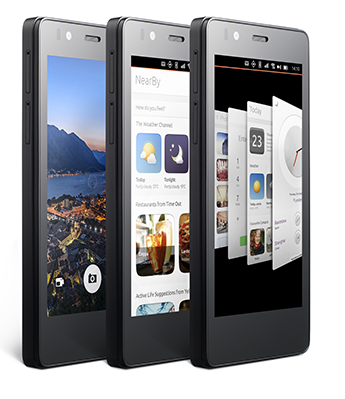The “Year of the Linux desktop” is something you often hear about in the Linux community. This idea refers to the year when Linux will claim the dominant market-share percentage from operating systems such as Windows and OSX. While I am not sure if Linux on the desktop will ever become dominant, one thing is for certain: Linux has already outpaced all of the other competitors in the mobile market.
When most people think of Linux on mobile devices their thoughts tend to go right to the current market giant: Google’s Android Operating System. While it is true that Android is powered by a Linux kernel at its core, the software stack on top of that Linux kernel is vastly different than other Linux operating systems.
Thankfully in the last year we have seen a few different alternative mobile operating system come to market that are not only powered by a Linux kernel, but also utilize other software you expect in a Linux based operating system. These alternatives include:
Sailfish OS perhaps has the longest history in mobile of these three operating systems. It is the successor to the Maemo operating system that first shipped with the Nokia N770 in 2005. Sailfish OS is powered by the Qt toolkit, utilizes the Wayland display server, and manages software via an RPM based package manager. You can find Sailfish OS in the wild powering the Jolla Smartphone:

and soon the Jolla tablet as well. Sailfish OS is primarily developed by the Jolla company, which is largely composed of ex-employees from Nokia who worked on Maemo.
Tizen borrows its core from a variety of places including Maemo, Meego, and Samsung’s Bada OS. Unlike Sailfish OS, Tizen has large backers behind it in the form of Samsung and Intel. The primary toolkit for Tizen are the Enlightenment Foundation Libraries. Current versions of Tizen utilize a traditional X display server, however they are currently working on moving to a Wayland based display server like Sailfish OS uses. Tizen is also powered by an RPM based package manager.
Tizen has been used to power things such as Smart TVs, Watches, and other embedded devices for a few years now, but the first Tizen powered phone was just released in January of 2015. The Samsung Z1:

Ubuntu is a name that those who use Linux on desktops or servers are likely already familiar with. At the start of 2013 it was announced that Ubuntu intended to break into the mobile market. Over the course of 2013 and 2014 development began, and early versions of Ubuntu Touch appeared for existing hardware such as the Nexus 4 and Galaxy Nexus.
Ubuntu Touch utilizes Qt technology similar to Sailfish OS, but instead of using the Wayland display server Ubuntu Touch builds on its own Mir as a display base. Ubuntu Touch is also set apart from Tizen and Sailfish OS in that it utilizes a DPKG based package manager as opposed to an RPM based one. The Ubuntu Touch based BQ phone was just released this year:

Wrapping Up
While alternatives are great, the question always comes up: Why? Why should you care about these alternative Linux based mobile devices when Android already has such a firm market hold? The answer from an open source perspective is simple: Upstream contributions.
While Android is building on the Linux kernel, not much of its remaining software stack builds on projects that benefit the Linux ecosystem as a whole. Having companies like Jolla, Ubuntu, Samsung, and Intel employing people to improve tools such as Qt, EFLs, Wayland and countless others help make the Linux experience better for everyone – not just the mobile device you use. By supporting these true Linux phones you are supporting the Linux ecosystem as a whole.
